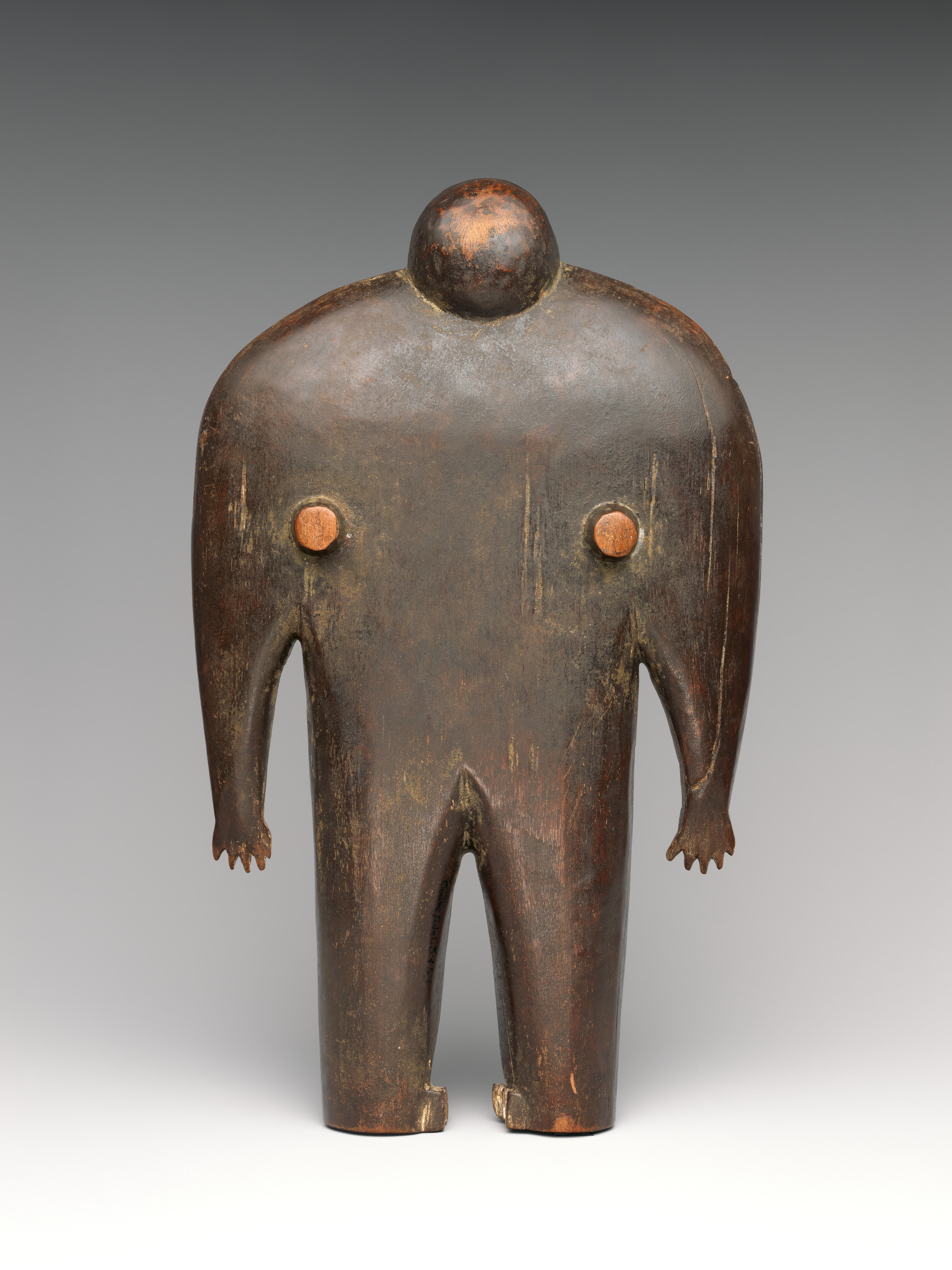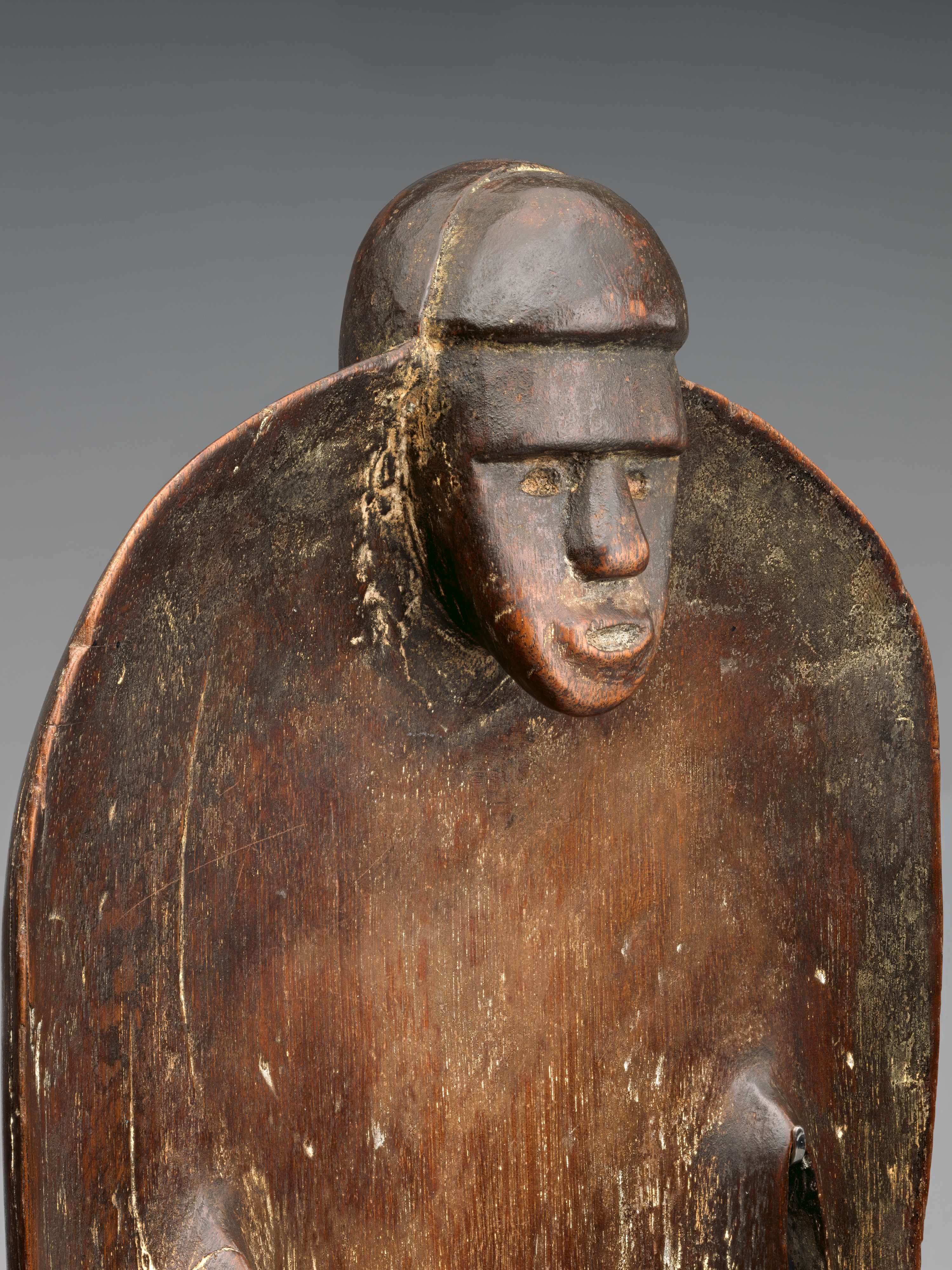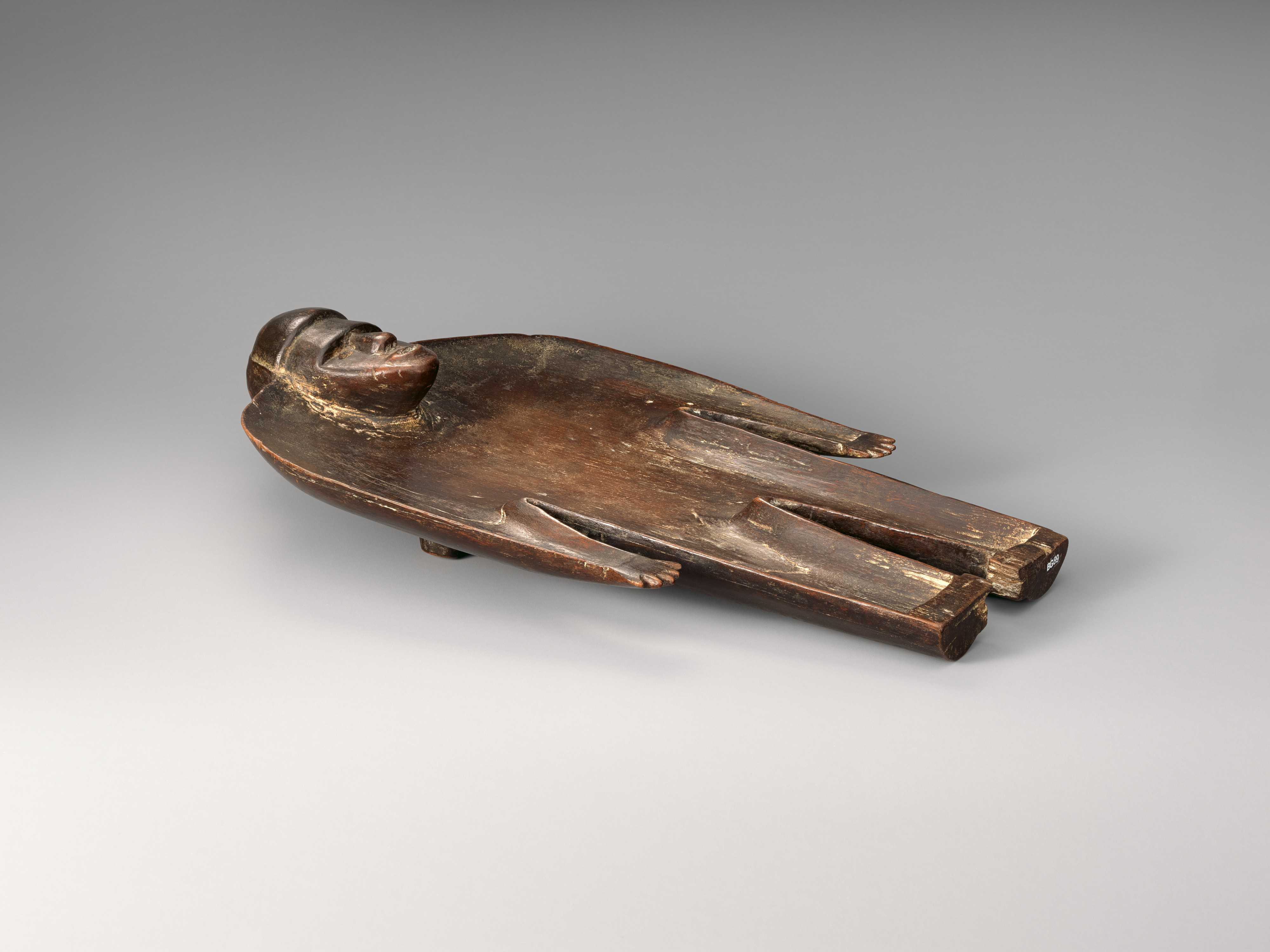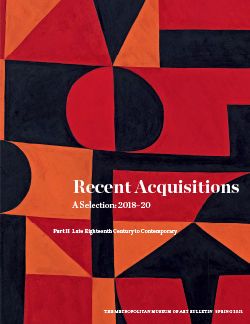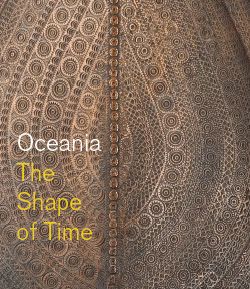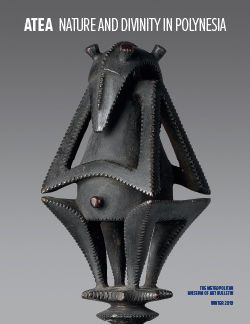Ritual dish (daveniyaqona)
This remarkable sculptural vessel is exceptionally elegant in its design and ingenious for its formal inventiveness. It is not simply a work of decorative art; it is a vessel conceived as a vehicle to elicit contact with ancestral gods. In a radical reinterpretation of form, the master carver who created it has fused the bold abstraction of a powerful physiognomy with the delicate contours of a receptacle. Despite its intimate scale, the looming ancestral figure exudes a powerful presence embodying the deep lineage of relations that were activated during its ritual use.
Sacred vesi wood was used for high-status ceremonial objects and formed part of the ritual paraphernalia of Fijian priests who were charged with the dangerous duty of entering into communication with gods and spirits on behalf of their chiefs. Delicately proportioned vessels of this kind were used to prepare and serve libations or to hold small amounts of sacred oil. Skillfully carved from a single block of wood, the shallow volume has been carefully hollowed to accommodate these liquids. The imbibing of the sacred yaqona plant in liquid form allowed the ancestor spirit to physically enter the body of the priest. Oil was used to anoint the body in preparation for the animated and highly physical ritual that involved the god taking possession of the priest. The figure’s hunched shoulders, heavy limbs and pronounced brow create an intensity appropriate to the solemnity of these ancestral invocations. Smoothed to a remarkable finish, the shallow curvature of the dish is remarkable given the hardness of the wood from which it is carved. A finely turned, gently beveled lip runs the length of the figure’s body and two elegant supports on the reverse allow for a modicum of stability ensuring that the vessel would not spill its precious contents when placed on the uneven earthen surface of the priest’s spirit house.
When placed upright, the figure assumes an extraordinarily powerful presence. Hollow eyes gaze directly ahead, lips gently parted, as if in a trance-like state echoing the context of its original use. The figure’s arms drop loosely down at each side and feature delicate hands with palms turned out as if in supplication, a nuanced reference to the solemnity of the rituals for which it was designed. The flat planar quality of the shallow vessel coupled with the bold volumetric head and corporeal presence create a formal tension at once dynamic and powerful. Above the concentrated brow of the ancestral figure is a simple raised ridge, likely a reference to the red and green feather headband worn by Fijian priests. These were composed of a woven fiber base to which the bright and colorful red and green feathers of the lorikeet attached. These feathers activated the connection with the spirits of deceased ancestors and gods during ritual.
Maia Nuku, 2020
Evelyn A. J. Hall and John A. Friede Associate Curator for Oceanic Art
Published
Nuku, Maia. ATEA: Nature and Divinity in Polynesia. The Metropolitan Museum of Art Bulletin, Winter, 2019, pp. 17-18. New York: The Metropolitan Museum of Art
This image cannot be enlarged, viewed at full screen, or downloaded.
This artwork is meant to be viewed from right to left. Scroll left to view more.


